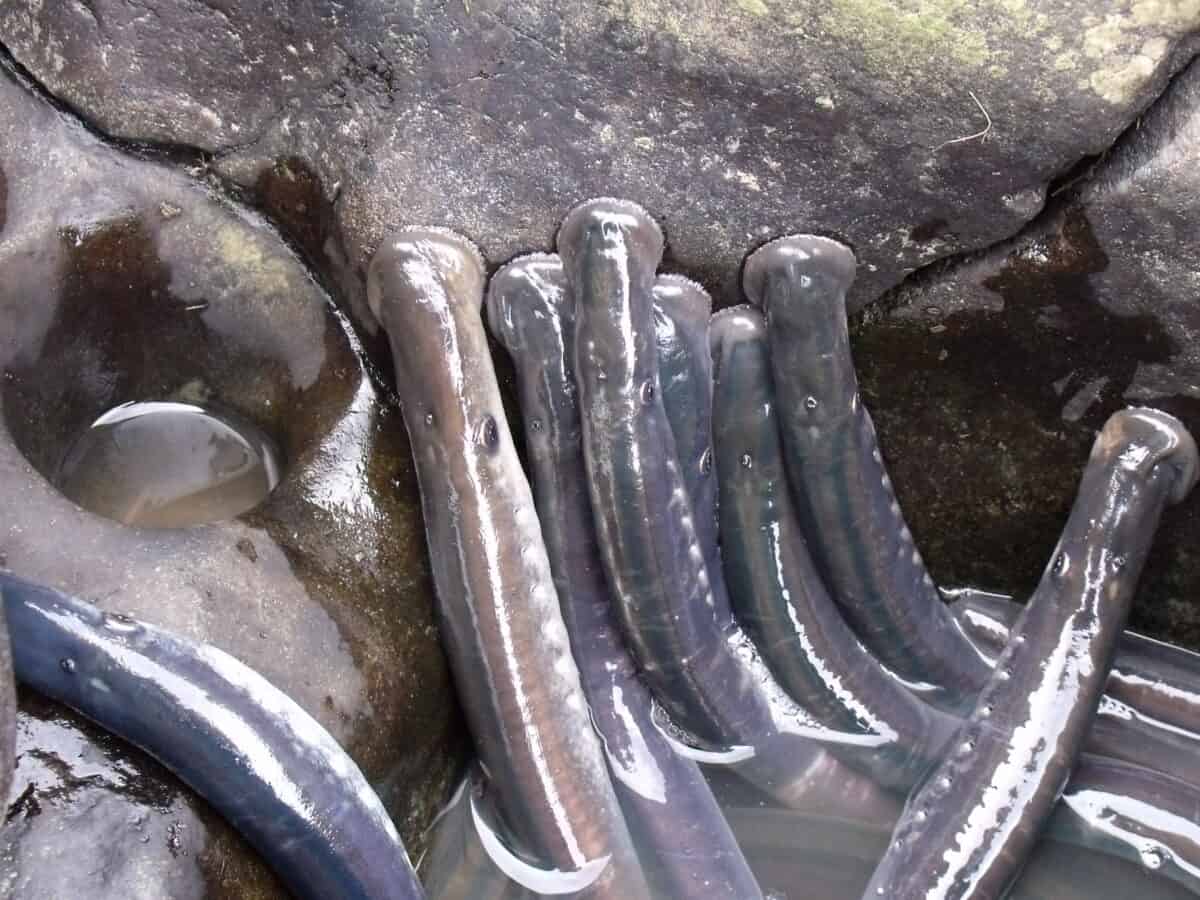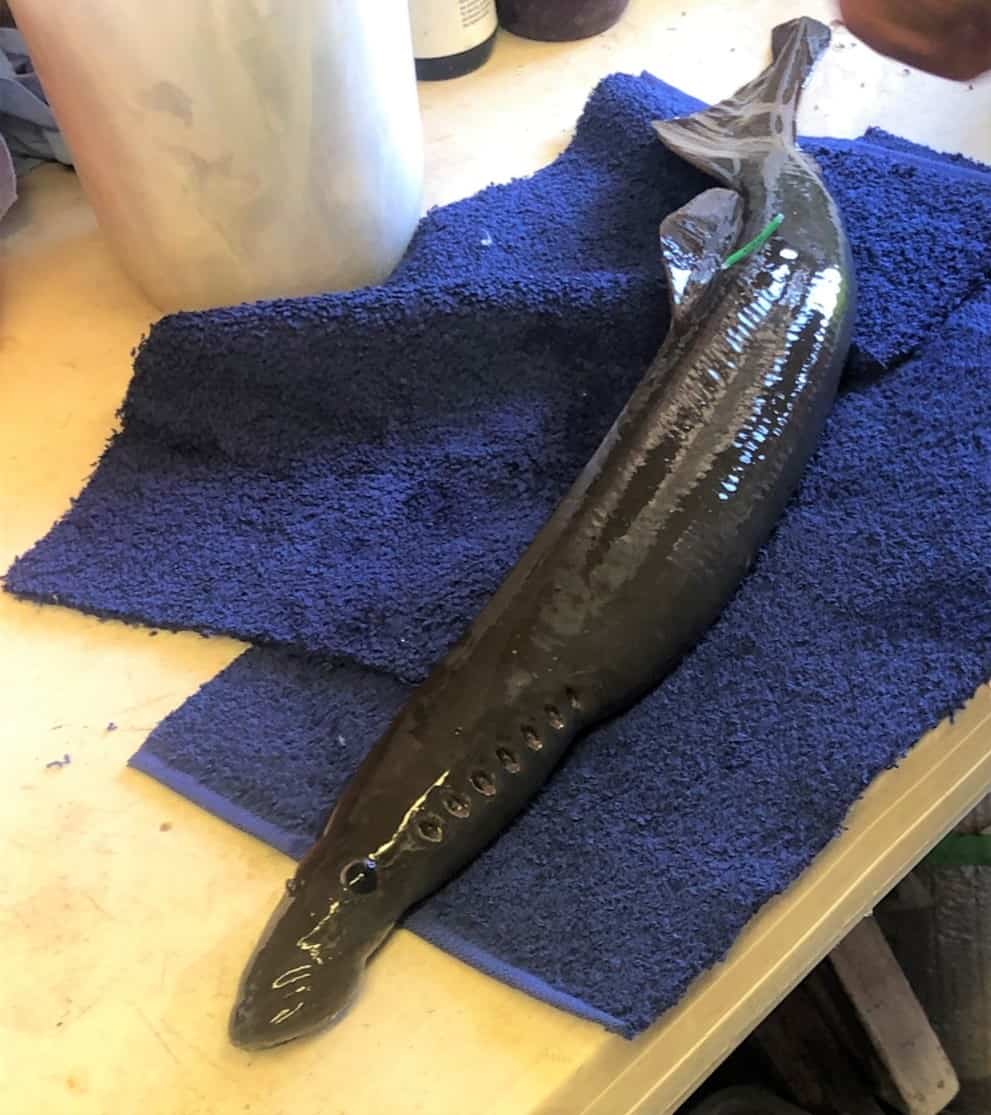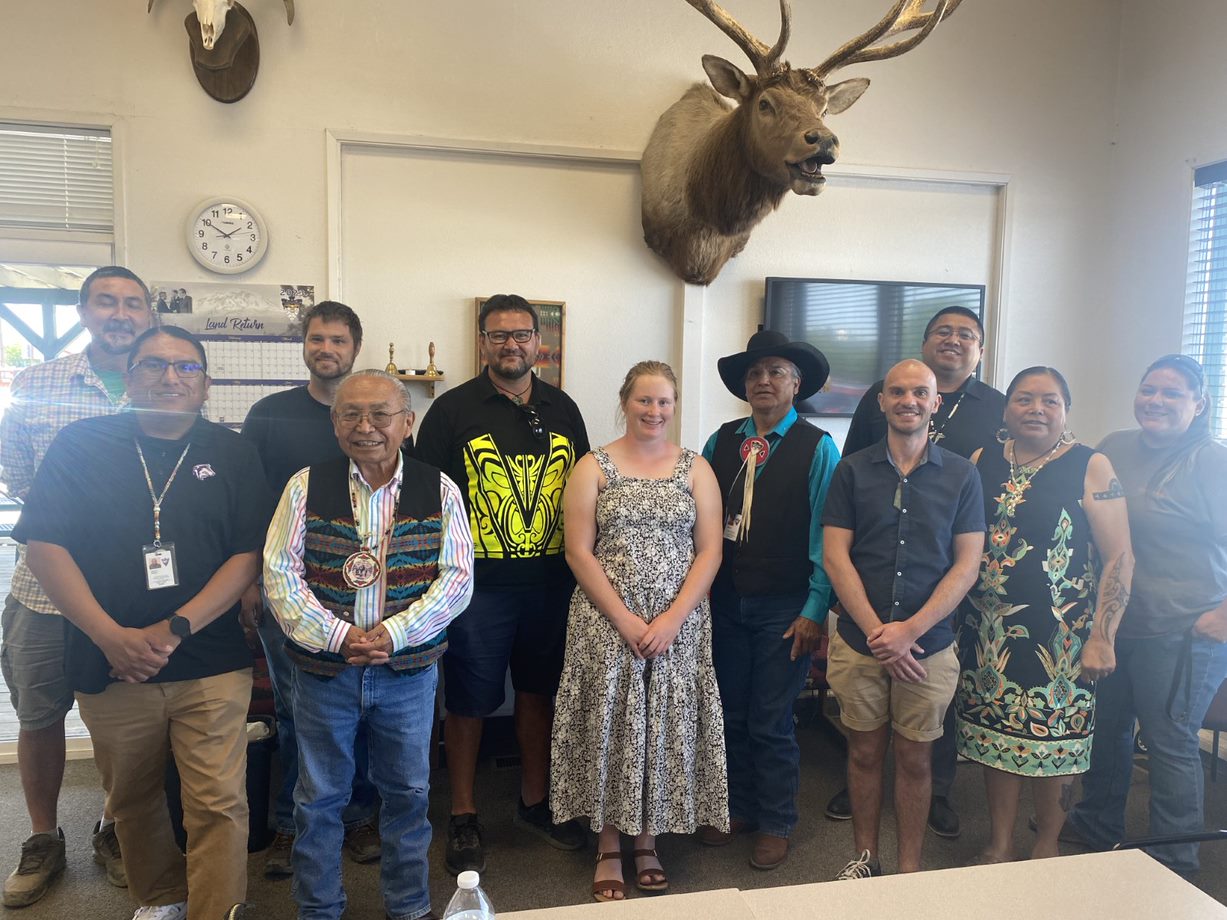Older than the asteroid impact that killed the dinosaurs, lamprey (kanakana) are a lineage of jawless fish known for their toothy sucker mouths, and their metamorphic lifecycle which includes both freshwater and marine phases. Kanakana males have pelican-like pouches, which may be used to brood eggs, or even gather nesting material. All round a fascinating fish, yet for many they still swim under the radar.


“They’re often forgotten. A lot of people in New Zealand don’t know kanakana exist,” says Hokonui Rūnanga’s Graduate Environmental Planner, Mollie Lyders (Ngāi Tahu, Ngāti Māmoe, Waitaha).
Alongside working on her Master’s of Environmental Policy and Management, Mollie is centrally involved in a research project focused on finding ways to protect and restore kanakana populations within the Mataura catchment, looking at migration barriers, loss of habitat and decreasing water quality.
In June, BioHeritage’s Freshwater For Our Taonga programme funded Mollie and a team of other researchers, including Riki Parata (Hokonui) and Matthew Wylie (Plant & Food Research), to travel to the USA to meet and collaborate with the Confederated Tribes of the Umatilla Indian Reservation and the Confederated Tribes of the Yakima Nation.
Their trip took them through Seattle, Portland, and Walla Walla in Washington, with the Willamette Falls being a significant site for Mollie. Similar to the Mataura Falls, both locations are impacted by the presence of industry.
“Willamette Falls is a place for cultural harvest for the Umatilla and Yakima Nation people,” she says. “There are huge dams along that river that have hugely affected their salmon and trout, which are First Foods. The Umatilla and Yakima Nations have funding from the power companies to get their [First Foods and conservation] programmes up and going.”
Like mahinga kai, the term First Foods refers to Indigenous People’s interests in traditional food harvests, and the places where these resources are obtained.
The founding name for the Mataura Falls, Te Au Nui Pihapiha Kanakana, pays tribute to the bounty of kanakana once available there.
“For us, kanakana are taonga species,” says Mollie. “Like kōura, tuna, and īnanga, they were a food source back in the day. But now, since there’s not many of them, and because the state of the water they live in isn’t that flash, nobody’s eating them.”
For Mollie, a key learning from the Umatilla and Yakima surrounds the propagation of their lamprey. Eggs are fertilised in hatcheries, and then the fry are then raised in artificial habitats, before the young lamprey are released into the wild.
Hokonui Rūnanga are looking at similar innovations for propagating kanakana, but more work is needed to determine exactly why kanakana numbers seem to be falling at the Mataura Catchment.
“We need more of that baseline research and monitoring before we can determine what’s going on for kanakana in the wild,” says Mollie.
Mollie was struck by the manaakitanga extended to her team on their trip, and by the knowledge sharing and nurturing of relationships enacted between the Umatilla and Yakima, and to their guests.
“Everyone we met was so accommodating and so willing to share their knowledge,” says Mollie. “It’s really inspiring.”
Kerry Donovan Brown
